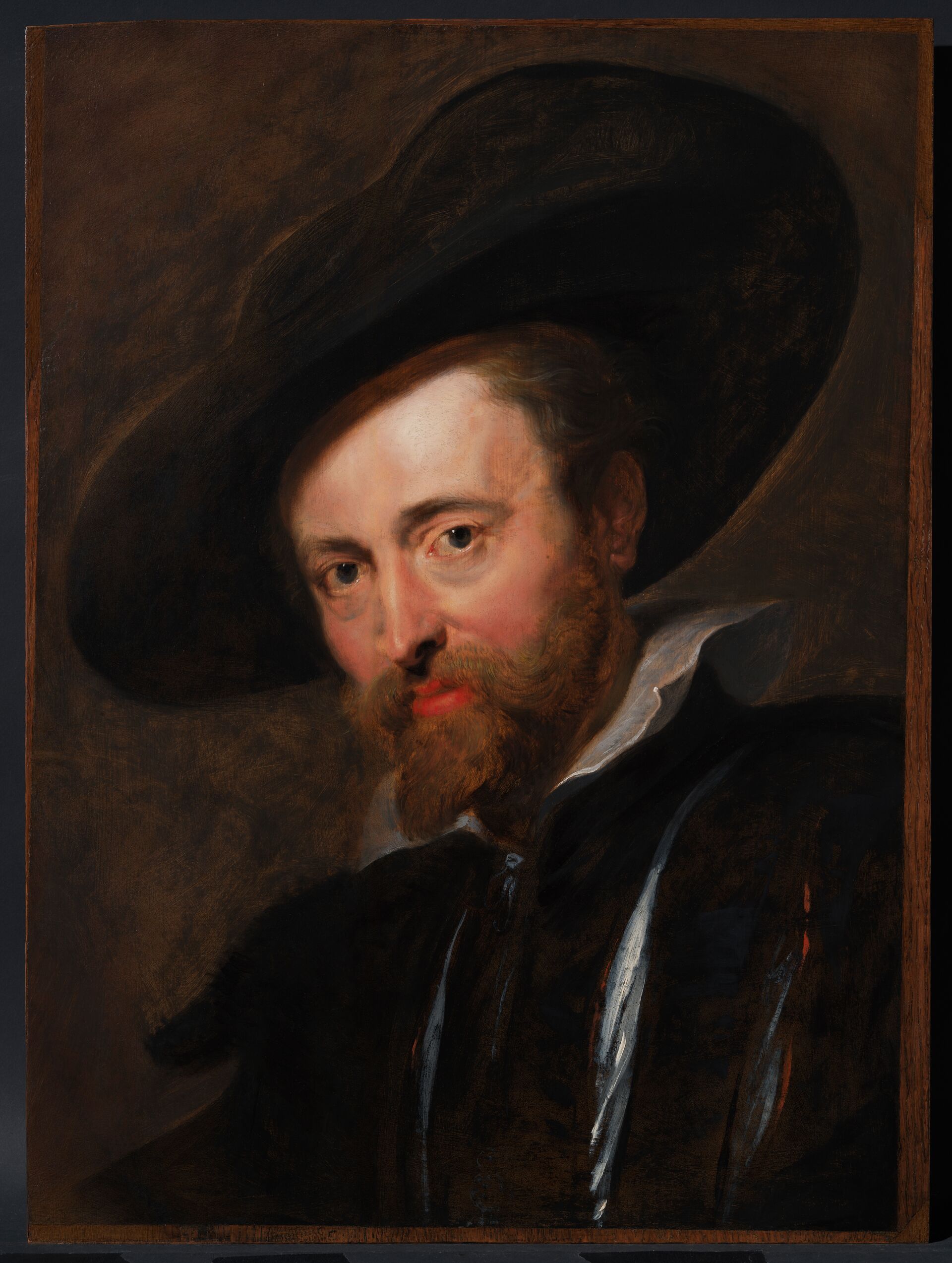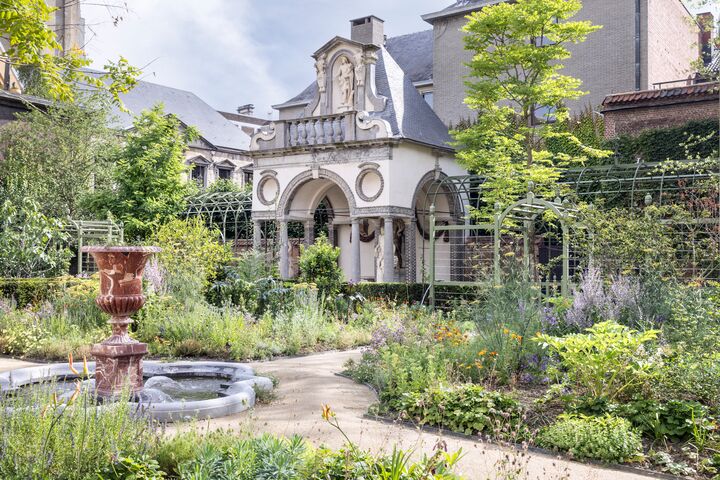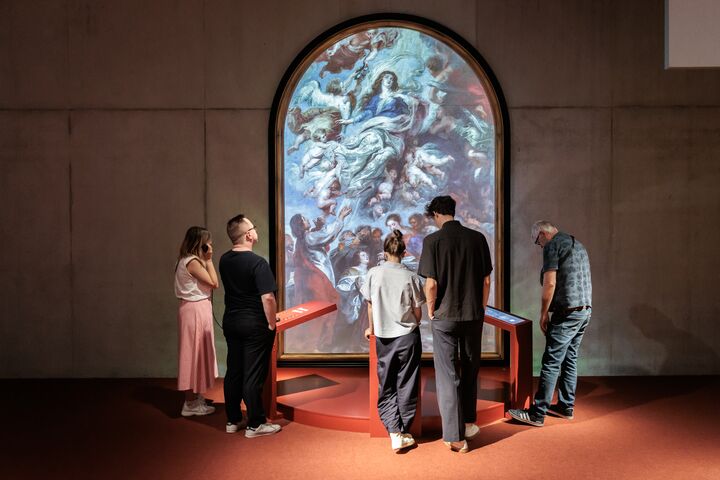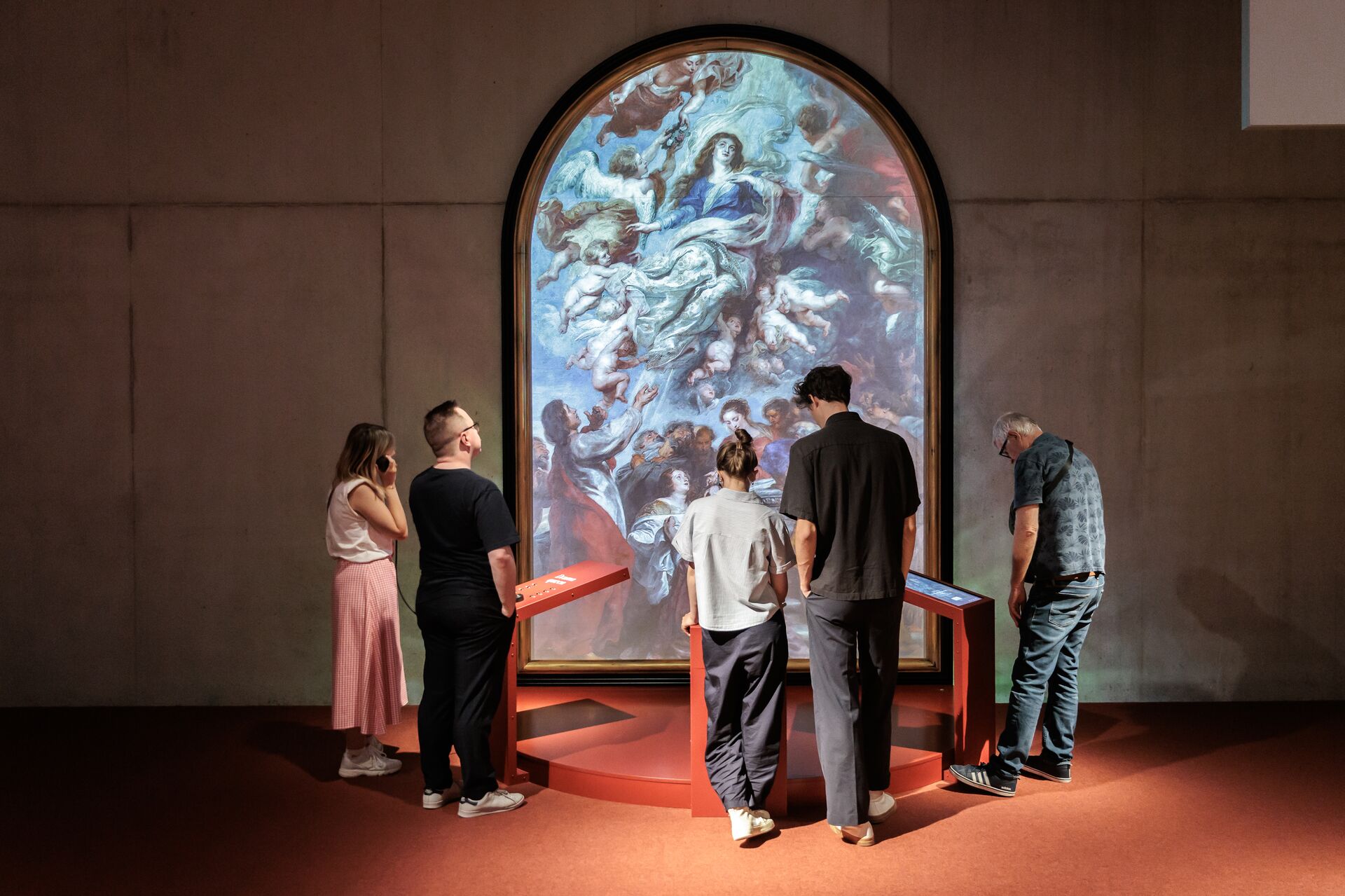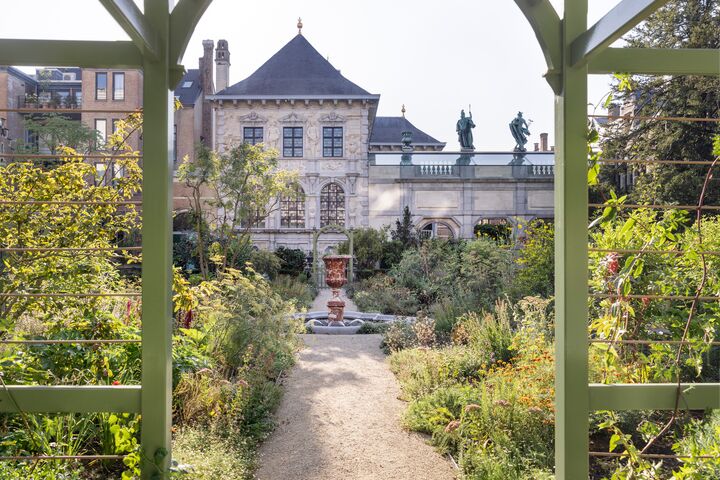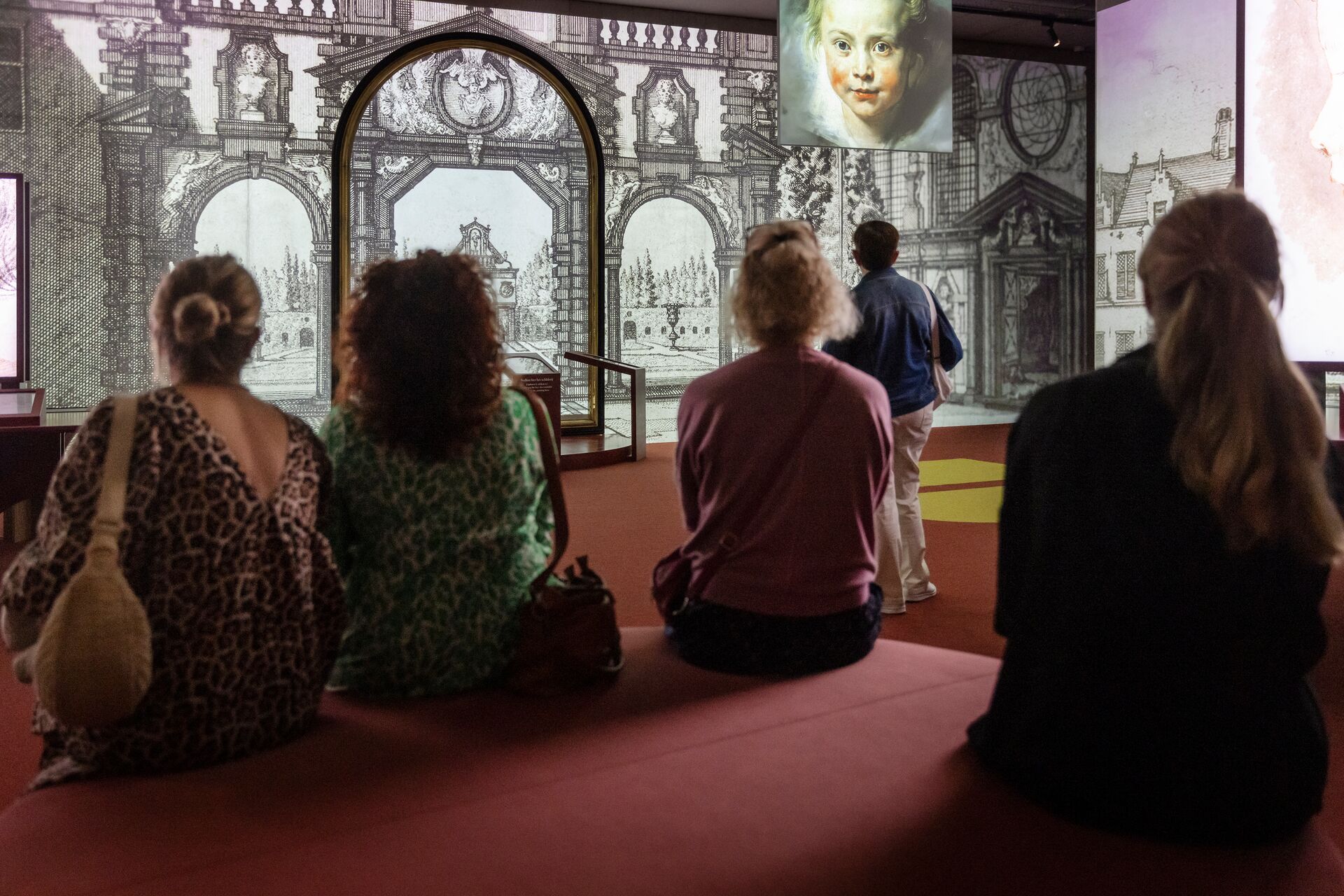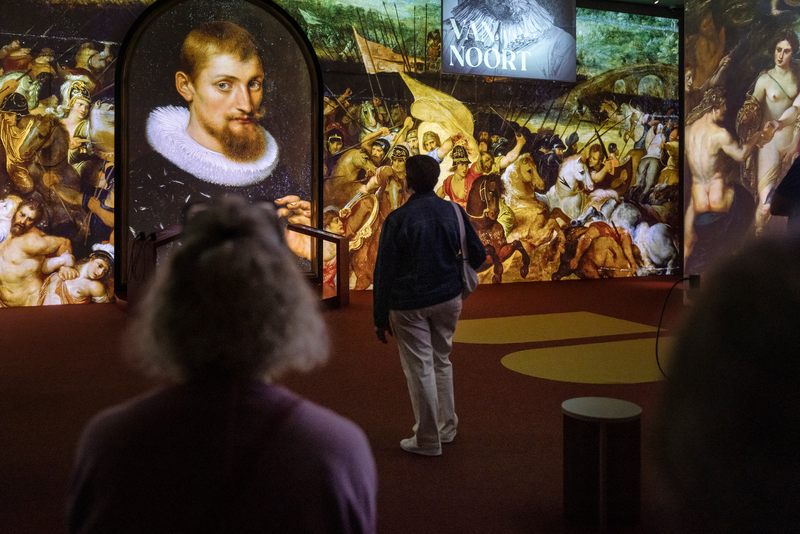
Self-portrait (1623-1630) - Peter Paul Rubens
At the Rubenshuis, you stand face to face with the world’s very first influencer. This is one of four rare self-portraits painted by Rubens. How the world viewed him was something that Rubens cared about. He never portrayed himself as a painter. Rubens consciously shows himself on this canvas as a sensible, determined yet gentle man. It’s a business card in oil.
When Rubens painted himself on this wooden panel, it was not with the intent to sell the work. He used it as a model for his students to paint their own portraits. He paid great attention to the details of his face and clothing, while the background is unfinished and dark. The broad brushstrokes - also in his clothing - emphasise the informal nature of the portrait.
Thanks to a thorough restoration in 2017, the original brushstrokes became visible again. They give you an idea of the skill and speed with which Rubens applied the paint.
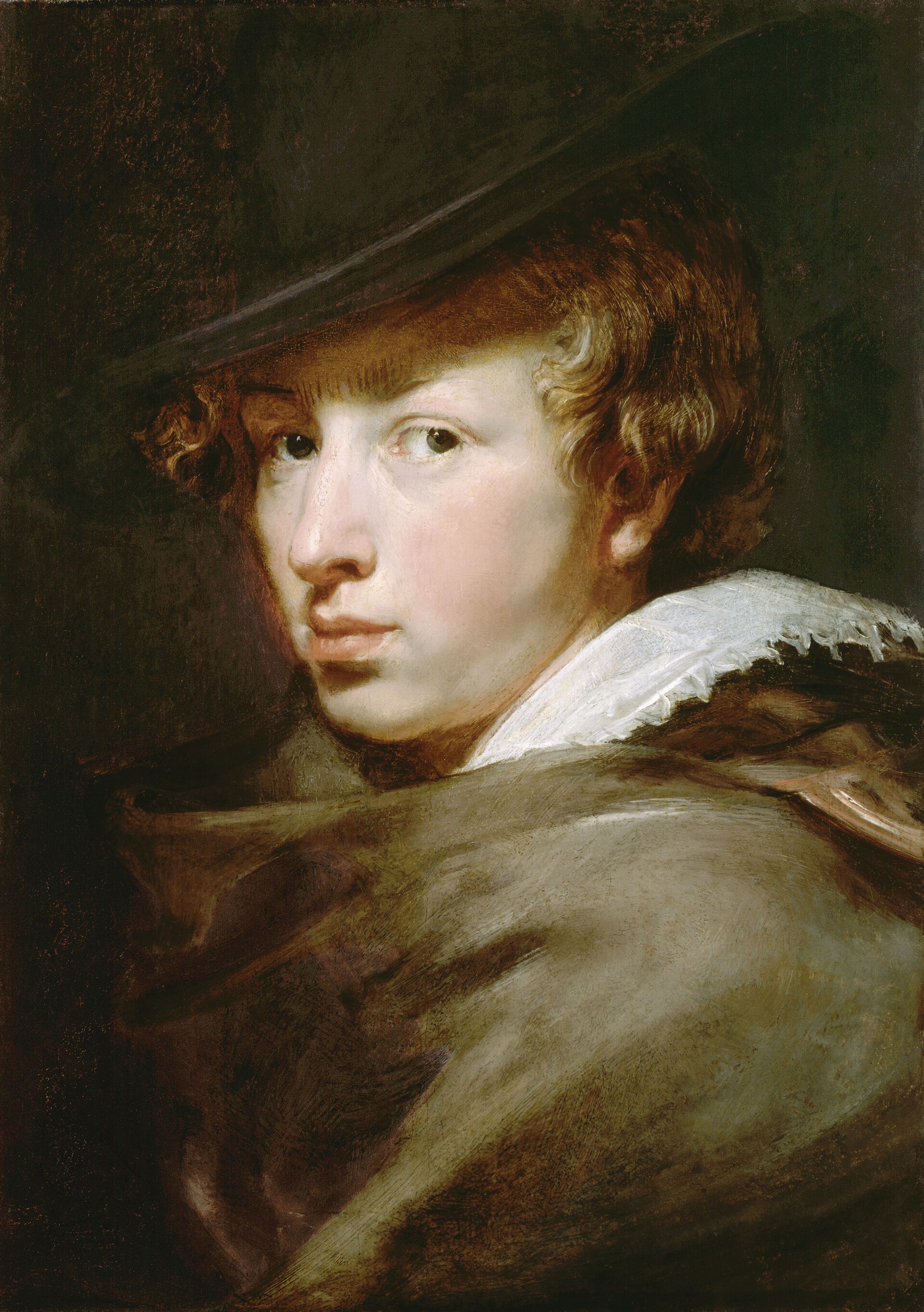
Portico and garden pavilion
The portico and the pavilion in the garden of the Rubenshuis are the only original architectural features remaining from Rubens’ time. The portico connected the artist’s residence to his painting studio on the other side. The combination of a portico and a pavilion was not to be seen anywhere else in Flanders at the time. Rubens drew inspiration from the art and architecture of Italy and the work of his great examples: Raphael, Michelangelo, Giulio Romano. Rubens introduced Baroque architecture to our regions and moulded it to his liking.
The structure is a nod to Porta Pia, Michelangelo’s famous city gate in Rome. On top are two life-size statues of the Roman gods Mercury (painting) and Minerva (wisdom). The rest of the portico is also brimming with symbolism in the form of sculptures and quotes.
Through the centre arch of the portico, your gaze is led to the garden pavilion. That sightline from portico to pavilion is no coincidence. The pavilion features another Greek god: Hercules, god of virtue. The message? Through art and wisdom, you find your way to virtue.
Practical information
Accessibility
- The garden and the building are easily accessible.
- For visitors with a hearing impairment, there are written-out audio texts; the film is subtitled in Dutch. Would you like more information about the garden? The Hofboekje, which you can find in the shop, provides additional text and explanation.
- For visitors with a visual impairment, you can use the wide range of audio clips available. In the garden you can listen to a podcast.

